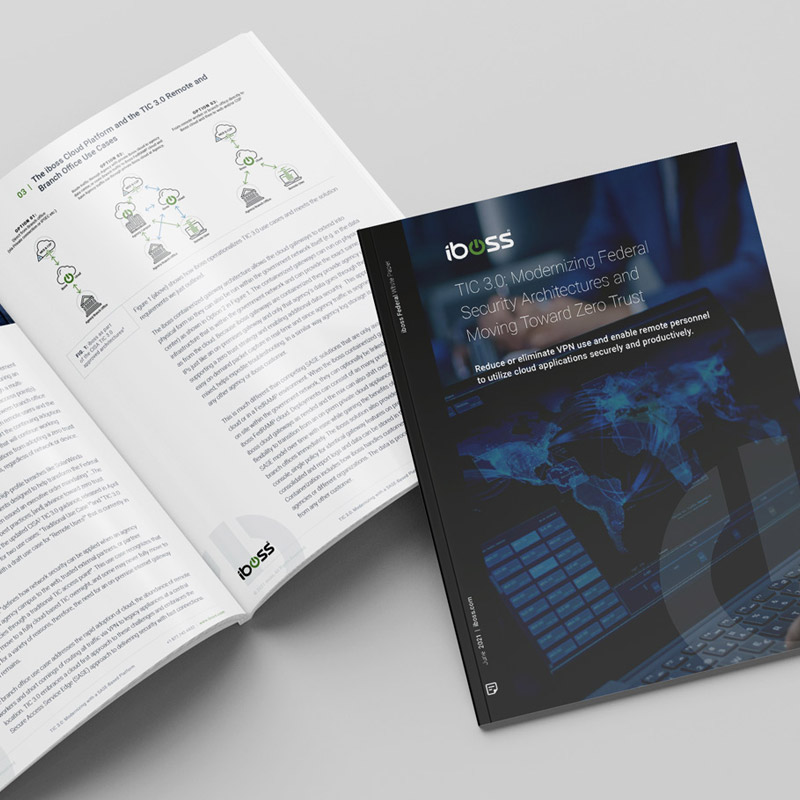Purpose Built for Zero Trust to Protect Government from Breaches and Data Loss
The iboss Zero Trust SASE prevents breaches by making applications, data and services inaccessible to attackers while allowing trusted users to securely and directly connect to protected resources from anywhere
Learn how the iboss Zero Trust SASE meets all requirements of NIST SP 800-207

iboss receives FedRAMP Authorization.
The iboss Zero Trust SASE meets Federal Risk and Authorization Management Program (FedRAMP) requirements and has achieved FedRAMP Authorization. Learn More.
iboss Attains StateRAMP Authorized Status.
The iboss Zero Trust SASE meets StateRAMP state and local government requirements and has attained StateRAMP Authorized Status. Learn More.
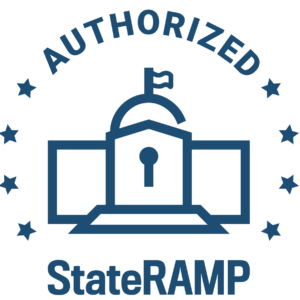
A Zero Trust SSE Service with Containerization at its Core
Understanding containerization is the key for government networks in need of a highly secure Zero Trust service. With a containerized service like iboss, the network connections from devices and users are processed within isolated containerized gateways which perform proxy and firewall functions. The containerized policy enforcement points never process data for any other organization and data is never mixed with that of any other customer.
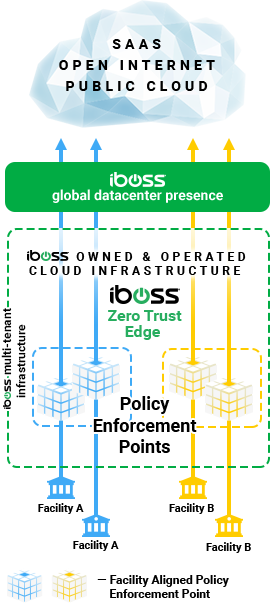
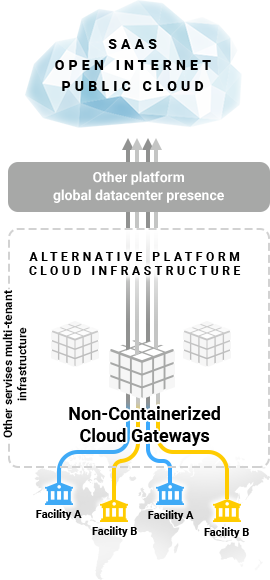
With alternative Zero Trust Solutions that lack containerization, network traffic from multiple organizations are processed within the same gateways that proxy, decrypt and firewall data for other organizations. Mixing data within the gateways that perform functions like decryption not only results in latency but increases security risks.
While Encrypted Traffic Dominates the Cloud, a Containerized Cloud Architecture Makes Inspection of any Traffic More Secure
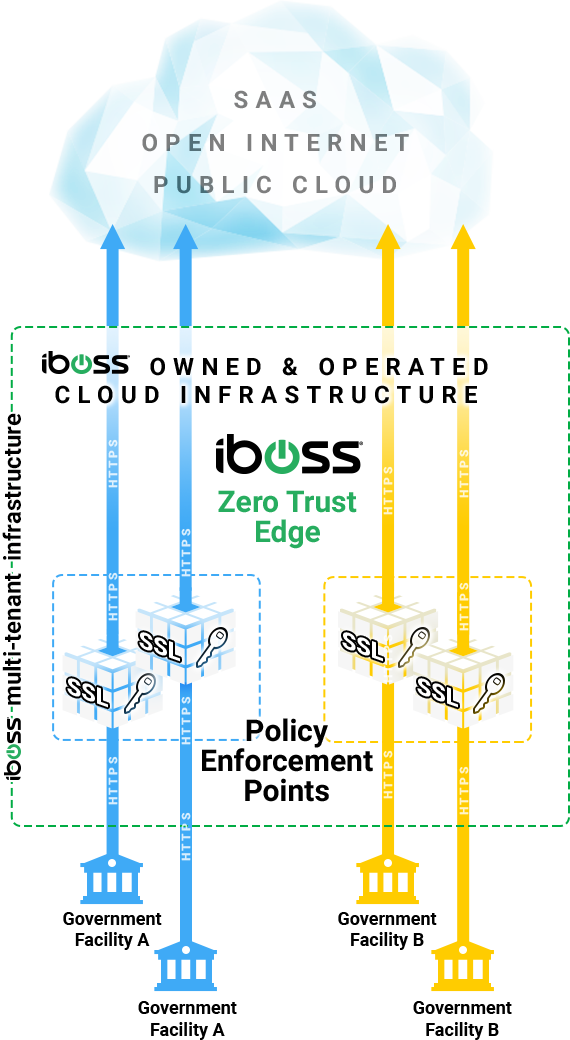
According to the Google Transparency Report on HTTPS, 99% of all browsing time is over encrypted HTTPS connections. This requires connections to be decrypted by the Zero Trust service to inspect content for malware, infections and data loss. To decrypt, special private key files must be used that allow traffic to be inspected and those key files must be available to the cloud policy enforcement points (PEPs) performing the inspection.
With a containerized cloud architecture like iboss, full isolation of data is achieved as it moves between users and the cloud, including full isolation of the private keys required to decrypt that traffic. The containerized cloud PEPs isolate the private SSL decryption keys to ensure security and reduce risk.
With a non-containerized cloud architecture, the private SSL decryption keys must be made available to the policy enforcement points (PEPs) that decrypt network traffic, but those PEPs are decrypting and processing traffic for any organization that traverses that PEP. This poses a big security risk as the decrypted data is now mixed within the proxies and firewalls in the cloud service. To make things worse, it provides a centralized point where all SSL private keys are available so that if a key is compromised for one organization, all keys are compromised for the other organizations that the cloud PEP is servicing. This has serious implications for high-security organizations, like government agencies.
With a non-containerized cloud architecture, the private SSL decryption keys must be made available to the gateways that decrypt network traffic, but those gateways are decrypting and processing traffic for any organization that traverses that gateway. This poses a big security risk as the decrypted data is now mixed within the proxies and firewalls in the cloud service. To make things worse, it provides centralized point where all SSL private keys are available so that if a key is compromised for one organization, all keys are compromised for the other organizations that the cloud gateway is servicing. This has serious implications for high-security organizations, like government agencies.
A Zero Trust Cloud Architecture Designed for Government with Dedicated Source IPs for Users Regardless of Location
Government agencies need a predefined set of network security functions applied to connections from users before accessing resources. This is easier to achieve when users are onsite or within government owned and operated facilities. As users move outside of the government owned and operated network perimeter, applying needed network security functions to network connections becomes very challenging as the users are connected to untrusted networks, such as their homes or coffee shops, which are outside of the control of the government agency. Network administrators do not have the advantage of configuring firewalls and routers on networks they do not control. However, the need to apply a mandatory network security stack to the connections still exists. To make things worse, the source IP Address of traffic originating from untrusted, remote networks is random and anonymous making it difficult to access restricted cloud application resources to only trusted IP sources.
The iboss platform provides a consistent network security stack that is applied to users, regardless of their location, including trusted government operated networks and untrusted remote networks. All traffic originating from users first traverses the iboss Zero Trust Cloud Platform before making it to its final destination, including public cloud destinations and other destinations like Microsoft 365. And because the iboss Zero Trust Platform is built on containerization, the source IP Address that is visible to the destination is always dedicated to the government agency. This means that even if a user is working from a remote network, such as their home, when the network traffic makes it to the application, such as Microsoft 365, the source IP Address Microsoft 365 will see is that of the government agency.

This has major advantages for government agencies which are running Comply-to-Connect initiatives. First, when a user connects to a cloud application service such as Microsoft 365, the agency can guarantee that the network security policies that specific government agency has in place have been applied. That is because the source IP Address is only used by users of that specific government agency as the containerized gateways proxy and NAT traffic without mixing data and with the ability to preserve the source IP regardless of user location.
This is unlike a non-containerized model where the source IP Addresses are shared between any customer leveraging the cloud security service. Although a security policy might be in place, it cannot be guaranteed that it is the network security policy specifically assigned by the government agency.
Additionally, the dedicated and sticky IP Addresses provided by the iboss Zero Trust service allows the government agency to apply login restrictions to cloud applications making originally publicly accessible applications private. For example, a public cloud application like Microsoft 365 can be locked down to only the source IP Addresses that belong to the government agency. Only users connected through the iboss service, and specifically connected through the agency’s account, will be allowed to connect to the cloud application.
Alternatively, with a non-containerized architecture, any user leveraging the cloud service, regardless of which agency or organization, can connect to the service if IP login restrictions are used. This is because the IP Addresses between organizations are shared and although you can lock the cloud application down to the ranges belonging to the cloud service, you cannot guarantee the user accessing the front door of the application is that of the specific agency. Any user running through the service, belonging to any account of the service, can access the application as the entire IP space of the service would have to be used to lock down the cloud application front door. This also poses challenges in ensuring that the policies in place for comply to connect initiatives are those for the specific government agency.

A Containerized Zero Trust Architecture that is Naturally Hybrid for Government Agencies

A containerized architecture allows the containerized cloud policy enforcement points (PEPs) to extend into physical form so they can be run within the government network itself. This includes running the PEPs within a government office, base or data center. The containerized PEPs run on physical infrastructure that is within the government network and have the ability to proxy and firewall traffic directly within the government facility without ever sending that traffic through the cloud PEPs running within the service.
This is much different than alternative Zero Trust services which are not based on containerization and do not have the ability to naturally extend in the private cloud form. When the iboss cloud containerized PEPs run onsite, within the government network, they can be linked to the global containerized cloud footprint. This means that traffic from remote users does not have to traverse back to the government datacenter while still having the same network security policies and source IP address ranges in place that are used within the private PEPs running within the government facility. Deployments can be as many private cloud PEPs and iboss cloud PEPs as needed and can even shift over time. This provides the flexibility to transition from an on-prem private cloud model to a full cloud model over time and with ease while gaining the benefits of protecting remote workers immediately.
Are You Implementing Trusted Internet Connection 3.0?
Get faster, more secure connections for your entire remote workforce, and increase productivity.
Agencies need to adapt their network and security plans to comply with TIC 3.0 for branch office and remote users as well as comply with the zero trust directive contained in the May 12, 2021 Presidential Executive Order. Learn how a cloud first Zero Trust platform fulfills these requirements while improving security and productivity.
Read our white paper to see next steps and start your journey to zero trust enabled by iboss.
iboss achieves FedRAMP Authorization
The iboss Zero Trust SASE meets the Federal Risk and Authorization Management Program (FedRAMP) requirements and has achieved FedRAMP Authorization.

